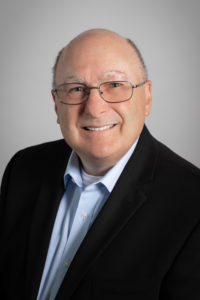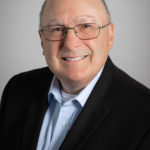Truly transformative technological leaps in dentistry are exciting—but rare. Might one of this year’s Edison Award nominees achieve escape velocity?
WE GATHER HERE ONCE AGAIN to celebrate the nominees for the 2020 Edison Awards, the annual celebration (see page 26) of what we hope will be game-changing new dental products and technology. Dentistry has certainly had its share of game changers over the years, truly innovative inventions that help propel the profession forward.
Throughout the 2010s—whatever else the decade was, it was a highly innovative time—the term “moon shot” came into vogue, gaining new currency last summer with the commemoration of the fiftieth anniversary of the Apollo 11 lunar landing. You often see the term used to discuss the workings of highly secretive departments of the tech giants: Google X, say, or the opaque design laboratory that Jony Ive ran at Apple.
Dental moon shots are more quotidian, but only just: high-speed handpieces, radiographs, local anesthesia, composite resins, CAD/CAM. The hallmark of the 2010s in dentistry, though, wasn’t a moon shot so much as innovations and enhancements of existing products and technologies. The profession hasn’t been standing still, of course. Indeed, transitions to new, innovative ideas can be challenging for many practitioners. What they’re currently offering patients works fine—why change?
There are always early adopters. You probably know one. I remember a friend who acquired the original Cerec system when I was just crawling with CAD/CAM. Or think of electric cars: Consumers were slow to adopt them, but from 2017 to 2018 they doubled their market share—only to 2.1 percent, yes, but the trend is clear.

Howard Strassler, DMD is a professor and the director of operative dentistry at the University of Maryland School of Dentistry; he also writes the “Cutting Edge” column in each issue of Incisal Edge. He practices in Pikesville, Maryland.
A good benchmark for dentistry is change with regard to digital radi- ology. In 2007, an ADA survey found that only 36.5 percent of dentists were using digital imaging; by 2019, two-thirds were. All the research and practitioner surveys I’ve read recently indicate that integrative imaging, planning and design implants will be used with increasing frequency.
But what will dentistry’s next moon shot be? For the general dentist, perhaps primary-service single-tooth direct-placement restorations. In spite of numerous advances, the basic chemistry of composite resins has changed little since their introduction in the 1960s, and that chemistry holds back restorations’ longevity. Composite resins are subject to environmental surface damage from brushing with abrasive toothpastes; a variety of foods and beverages will affect restorations’ longevity as well.
I’d argue, too, that one moon shot ought to be a better resin matrix system—not an easy task, and even with a better composite, adoption will be relatively slow. The rest of 2020 will see advances in existing technologies through hardware improvements, better software integration and integration of imaging, planning and restoration. Jumps using Cone Beam radiology, implant design and placement, orthodontic aligners and other restorative procedures are also in the offing in the months and years ahead.
Dentistry is basking in an age of the routinely miraculous. Whether any of this year’s Edison nominees ultimately prove to have been that ever- elusive moon shot, that happy fact is always worth celebrating.




